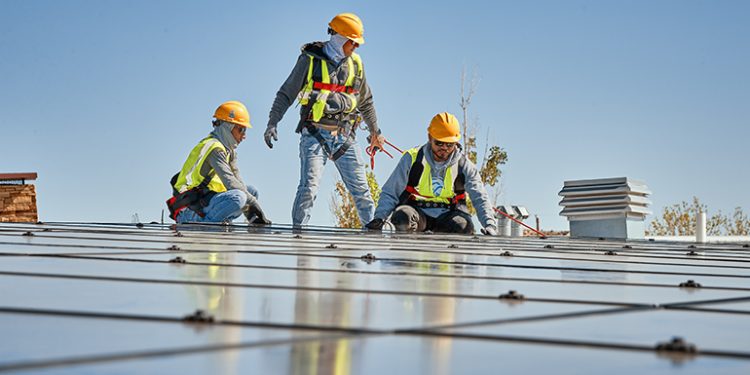Contrary to initial interpretations, it is possible for residential solar projects to take advantage of the domestic content bonus credit in the Inflation Reduction Act (IRA). However, homeowners aren’t the ones gaining the tax break.

Credit: Sunnova
When projects use domestically made solar components, they can tack on an additional 10% to the Investment Tax Credit (ITC), a 30% tax credit valued against the total cost of a renewable energy project. The ITC is a longstanding subsidy in solar that historically has been available across market scales. But domestic content — among other bonus adders in the IRA — is not available to every customer.
Individual homeowners can’t claim the domestic content bonus, but businesses can. To meet domestic content eligibility on a residential project, the array must be leased to the homeowner or the homeowner must enroll in a power purchase agreement. In other words, residential projects can qualify for the domestic content bonus adder through third-party ownership (TPO), and the business financing the project receives the credit.
“Homeowners and contractors will not be able to capture the credit directly,” said Glenn Woodruff, associate product marketing manager at solar racking manufacturer IronRidge. “Whether the TPO financiers elect to share any benefits of the [domestic content bonus] with installers and/or homeowners is a matter that is completely up to the discretion of each TPO financier.”
One such TPO financier is Sunnova, a national solar installation company working in the residential and commercial markets. On Sept. 1, Sunnova mandated that all company solar projects must qualify for domestic content.
“As an American solar energy company, we have a vested interest in ensuring American jobs are positively impacted by our business, and we are pleased to do just this through utilizing the IRA’s domestic content bonus adder,” said Russell Wilkerson, Sunnova’s head of corporate communications. “One of the IRA’s goals was to boost American manufacturing jobs, and Sunnova is proud to support these efforts. Additionally, meeting the investment tax credit … is cash-accretive to Sunnova.”
Recent updates to domestic content
Two years on, the Dept. of the Treasury is continuously updating the IRA, using feedback from industry members to shape its guidance. Earlier this year, another round of guidance for domestic content qualification was released and the options for submitting the required documents was expanded.
Originally, qualifying for domestic content required submitting data that manufacturers didn’t want to share publicly for competitive pricing’s sake.
“Domestic content compliance is determined off of the manufacturer’s actual production cost of a piece of equipment,” said Tony Ollmann, principal in charge of construction risk services and compliance at Baker Tilly LLP. “It’s not what the owner pays for it; it’s not what the contractor pays for it. You have to go all the way back to the manufacturer, and they have to share their confidential cost book in order to calculate domestic content. That’s a little bit like someone asking to see your W2 before they make you an offer on your next job.”
Treasury’s latest amendment to the domestic content guidance included a new elective safe harbor, which sets established percentages for domestically manufactured components used on an array instead of basing those values on a manufacturer’s cost sheet. A solar project qualifies for domestic content when it is composed of a certain percentage (currently 40%) of components manufactured in the United States, and that required percentage will increase over the years.
Many U.S. solar manufacturers serving the residential market have started marketing their products as eligible for domestic content this year. SnapNrack, a solar racking and mounting company, is shifting production of its core products to the United States to serve this new residential interest in domestic content.
“When we got word of this, because, obviously, a lot of our customers do installs for these TPO providers, we saw an immediate influx of questions and demand,” said Andrew Wickham, director of products and engineering at SnapNrack. “We just moved everything to making it domestically, in case that’s what TPO providers come to us saying they want.”
Large-scale solar may be the biggest target for IRA benefits, but the small-scale market is cashing in on some of the perks now too.
Combining the fact that it is possible for residential solar projects to qualify for the domestic content bonus adder with safe harbor’s simpler requirements for product submittals positions smaller scale solar in the United States for new growth with higher possible subsidies.
“Just in general, there is no question that [domestic content] has stimulated demand for solar projects,” Ollmann said.


















